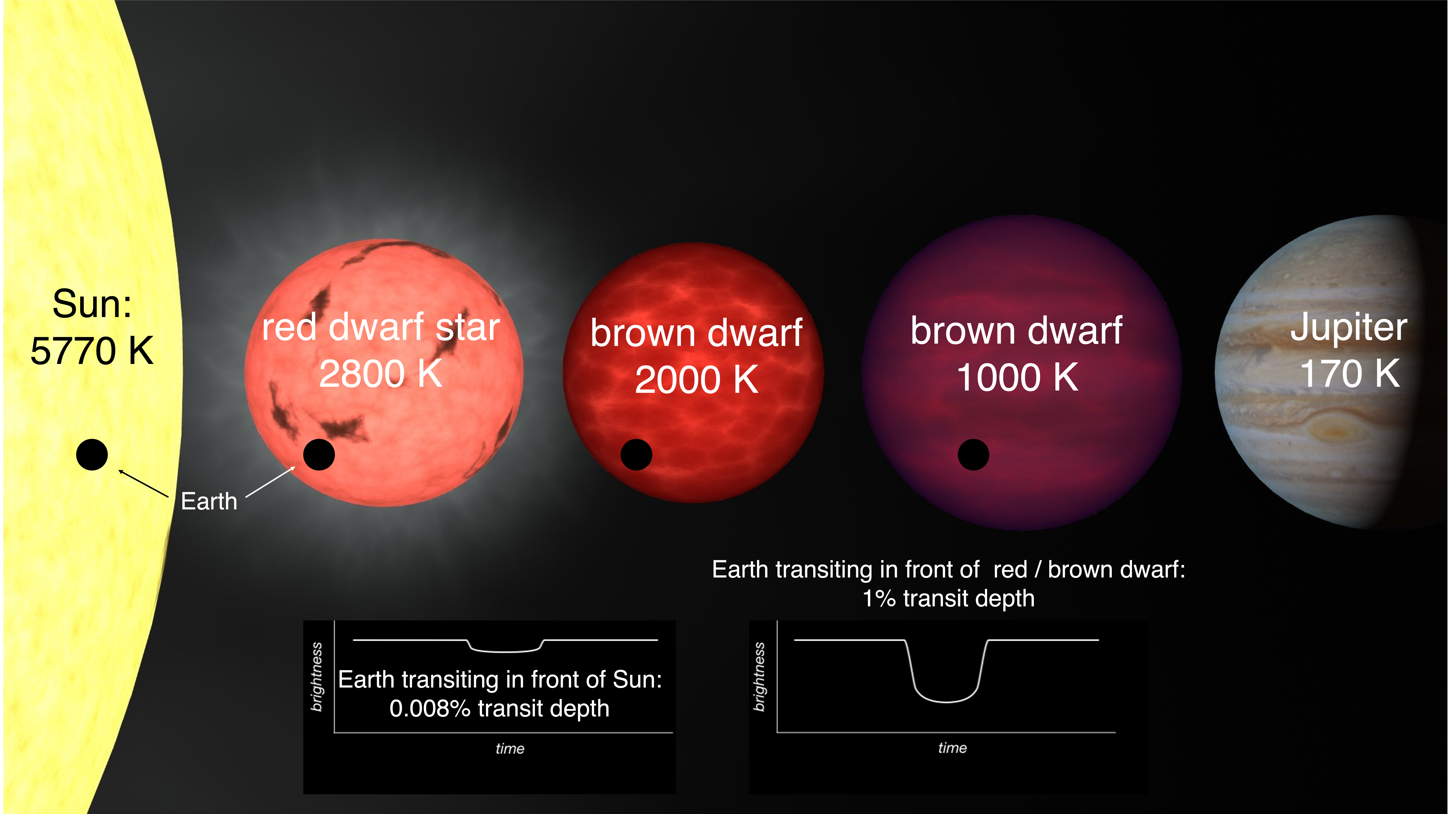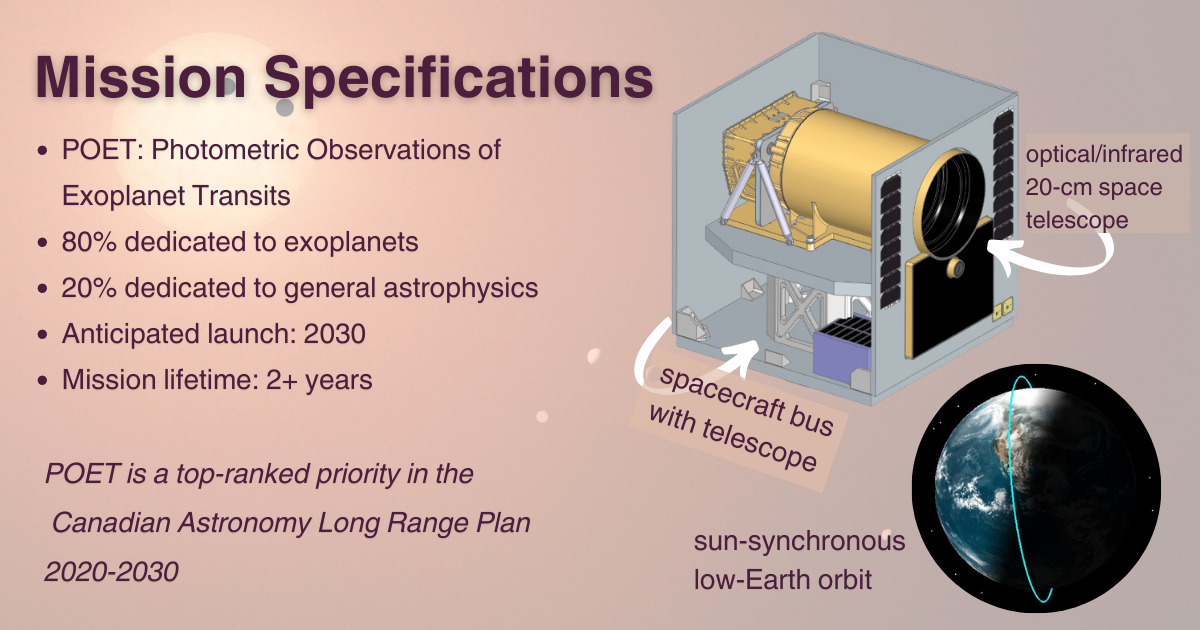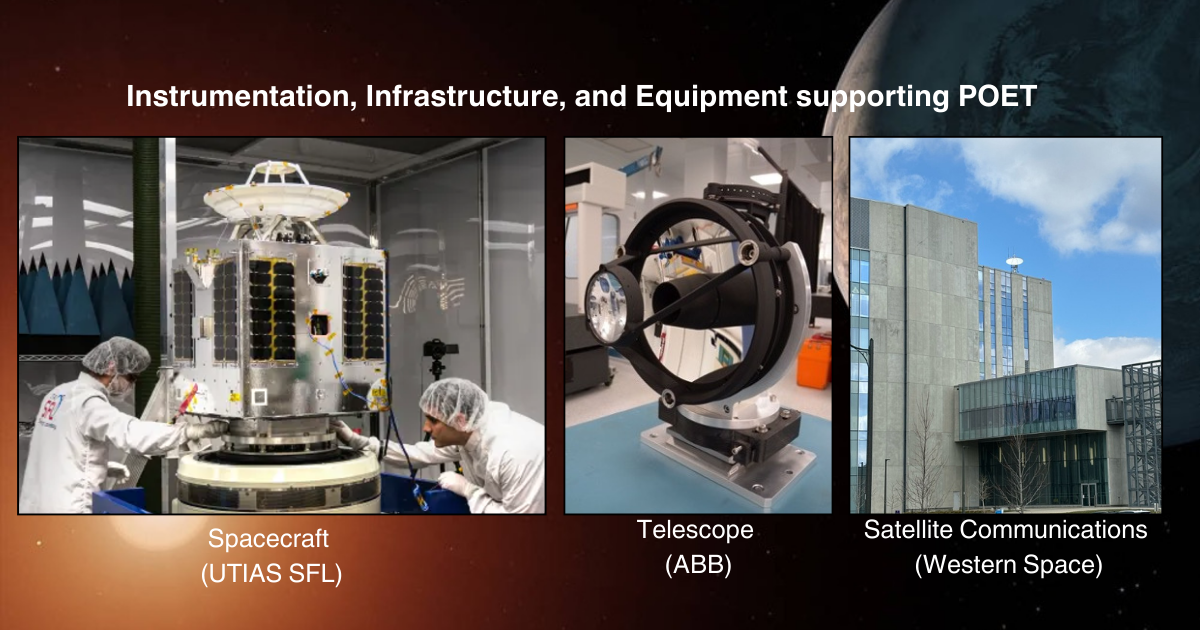The POET Space Astronomy Mission

Lead by mission co-P.I.'s Stanimir Metchev (Western University) and Jason Rowe (Bishop's University), the POET Space Astronomy Mission is a collaborative pan-Canadian partnership project with seven academic institutions, industry, and government members. The goal of POET is to search for exo-Earths transiting across small stars.
Why search for exo-Earths that are orbiting brown dwarfs?
Using the transiting method, exoplanets that orbit brown dwarfs, which are considerably dimmer than larger stars (such as our Sun), have a significantly higher change in transiting depth. This greater percentage of change in light, otherwise known as transiting depth percentage, makes identification of exoplanets easier. This is especially true in systems that have multiple orbiting exoplanets, such as the TRAPPIST-1 system shown above.

Brown dwarfs are more common than other star types, as they make up 75% of all stars in the Milky Way Galaxy. The challenge in studying them lies in their intrinsinc faintness versus larger stars. Compared to our Sun, brown/red dwarfs are 20% to 50% as bright.
How can we study the stars that host the most exoplanets in our galaxy if we can't see them?
Spearheaded at Western University, the solution to identifying and studying these dim stars is a telescope optimized to study them using infrared spectrometry and photometric-only observations, which maximize the sensitivity of the observation.

How is POET optimized for observing red dwarf planets?
The POET telescope uses photometric-only observations to ensure maximum sensativity to light from the stars. Using a unique simultaneous broad-band imaging techniques, POET can observe wavelengths between 300 nm - 1700 nm. Red dwarfs peak in brightness between 900 nm -1700 nm. Using this unique technique, POET will be a focused, dedicated resource to study red dwarfs.

How POET benefits Canada
Leadership in exoplanet exploration:
The search for life is a top priority in the international astrophysical community, and POET is a nationally top-ranked and unique mission on the global stage.
Commercialization of technology:
ABB's telescope prototype is new tech for space-based infrared remote sensing
Unique resource for Canadian astronomy:
POET is Canada's third-ever space telescope, and would act as a national core research facility

